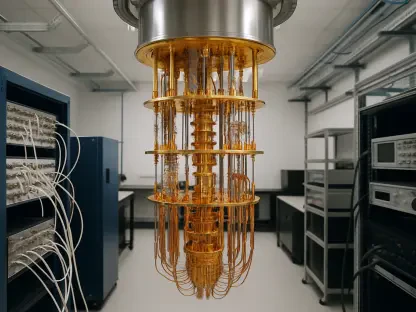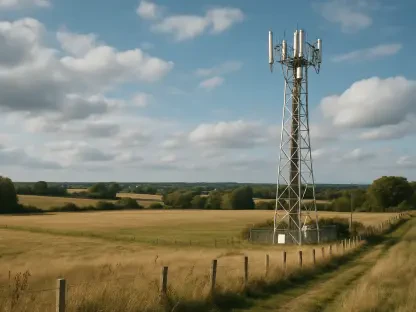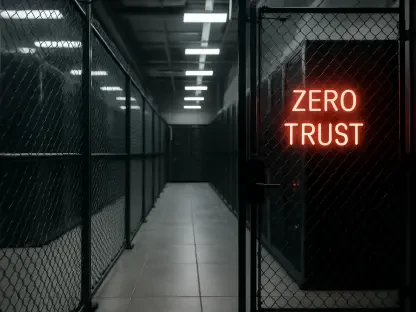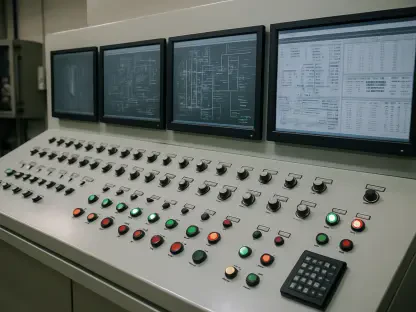Welcome to an insightful conversation with Matilda Bailey, a renowned networking specialist with deep expertise in cutting-edge technologies and trends in cellular, wireless, and next-gen solutions. With a unique perspective on how energy systems intersect with modern infrastructure, Matilda brings a fresh lens to the rapidly evolving world of Battery Energy Storage Systems (BESS). Today, we dive into the critical role BESS plays in supporting renewable energy, stabilizing power grids, and powering the ever-growing demands of data centers. Our discussion explores the technology’s benefits, challenges, and investment potential, shedding light on how it’s shaping a more sustainable and resilient energy future.
How do Battery Energy Storage Systems (BESS) work, and why are they becoming a cornerstone for integrating renewable energy sources like solar and wind into our power systems?
BESS are essentially large-scale battery setups that store electricity for later use, acting like a buffer for the grid. They capture excess energy when production is high—like during sunny or windy periods—and release it when demand spikes or generation drops. This is crucial for renewables because solar and wind are intermittent; the sun doesn’t always shine, and the wind doesn’t always blow. Without storage, that inconsistency can destabilize the grid. BESS helps smooth out those fluctuations, making renewables a more reliable power source. Their importance has skyrocketed as we push for low-carbon energy systems globally, especially with the energy crisis highlighting the need for flexible, scalable solutions.
What specific challenges do renewables pose to grid stability, and how does BESS address those to ensure a steady power supply?
Renewables introduce variability because their output depends on weather conditions, which can change rapidly. This creates mismatches between supply and demand, leading to potential blackouts or wasted energy. BESS tackles this by storing surplus power during overproduction and discharging it during shortages. Think of it as a giant backup that responds in real-time, balancing the grid. It also provides ancillary services like frequency regulation, which keeps the grid’s electrical frequency stable. Without this kind of flexibility, we’d struggle to scale up renewables without risking reliability.
Why do you think BESS has attracted more investment compared to traditional energy storage methods like hydropower in recent years?
The energy crisis has exposed the limitations of older methods like hydropower, which, while effective, are geographically constrained and slow to expand. BESS, on the other hand, offers modularity and speed—you can deploy it almost anywhere, scale it as needed, and get it running much faster. Investors see the potential in its adaptability, especially with renewables growing so rapidly. Plus, market dynamics, like falling solar costs and the rise of electric vehicles, have amplified the need for storage, making BESS a more immediate and versatile bet compared to traditional options.
Turning to data centers, how can BESS enhance their operations, particularly in terms of reliability and uptime?
Data centers are power-hungry and need uninterrupted electricity to avoid costly downtime. BESS acts as a robust backup, stepping in during outages or grid failures to keep operations running smoothly. Beyond that, it enhances resiliency by smoothing out power fluctuations, which is critical for sensitive equipment. Unlike traditional UPS systems that offer short-term relief, BESS provides longer-duration storage, ensuring data centers can weather extended disruptions. This reliability is a game-changer, especially as demands from AI and cloud computing continue to surge.
In what ways can BESS help data centers manage and potentially reduce their energy costs over the long term?
BESS allows data centers to play the energy market to their advantage through a process called energy arbitrage—storing power when prices are low, typically during off-peak hours or high renewable production, and using or selling it when prices are high. This can significantly cut energy bills over time. Additionally, by integrating BESS, data centers can reduce reliance on expensive peak-time grid power and even generate revenue by selling excess stored energy back to the grid in some regions. It’s a smart financial strategy alongside the operational benefits.
How does BESS support data centers in balancing their massive energy demands with sustainability goals, especially with the rise of AI workloads?
AI workloads are pushing data centers to consume unprecedented amounts of energy, which makes sustainability a tougher target. BESS helps by enabling these facilities to store and use renewable energy more effectively, reducing their carbon footprint. For instance, they can store solar or wind power when it’s abundant and use it during peak demand, cutting dependence on fossil fuel-based grid power. This aligns with decarbonization goals while ensuring the energy supply keeps up with AI-driven demands. It’s a dual win—meeting both environmental commitments and operational needs.
What are some of the hurdles data centers face when adopting BESS, and how might they overcome them?
The biggest hurdle is the upfront cost—installing BESS can run into hundreds of dollars per kilowatt-hour, which is a hefty investment, especially for smaller operators. Maintenance and ensuring long-term battery health are also concerns, as is navigating regulatory complexities around grid connection. To overcome these, data centers can look into state or federal incentives, like those in the U.S., which can offset initial expenses. Partnering with experienced vendors for installation and maintenance, and planning for scalability, can also help manage costs and technical challenges over time.
How do environmental conditions impact BESS performance in data centers, and what strategies can operators use to mitigate those risks?
Extreme heat, cold, or humidity can degrade battery performance and shorten lifespan, which is a real issue for data centers where reliability is non-negotiable. High temperatures, for example, can accelerate chemical wear inside batteries, while cold can reduce efficiency. Operators can mitigate this by investing in robust climate control systems to maintain optimal conditions for the batteries. Site selection also matters—choosing locations with milder climates or designing facilities with proper insulation and ventilation can make a big difference. Regular monitoring and maintenance are key to catching issues early.
Looking at the investment landscape, what makes BESS such an appealing opportunity for investors right now?
BESS is attractive because it offers diversified revenue streams—think energy arbitrage, grid balancing services, and capacity market payments. Unlike standalone solar or wind projects, BESS provides flexibility to the grid, which is increasingly valuable as renewables grow. The rapid expansion of battery capacity, from under 50 MW to over a gigawatt in just a few years, shows strong market momentum. Investors also see the long-term potential with projections of renewable energy production doubling by 2035, which will only increase the demand for storage solutions like BESS.
What’s your forecast for the role of BESS in the future of energy systems, especially as renewable energy continues to scale up?
I believe BESS will become indispensable as we transition to a renewable-heavy energy mix. With output from sources like solar and wind expected to skyrocket in the coming decades, the need for reliable storage to balance the grid will only grow. BESS will likely evolve with advancements in battery chemistry and cost reductions, making it even more accessible. For data centers and other high-demand sectors, it’ll be a cornerstone for both sustainability and resilience. I think we’re just at the beginning of seeing how transformative this technology can be in creating a stable, low-carbon energy future.









